
Drone Inspection Guide: How UAV Inspection Is Used Today
Drone Inspection Guide: How UAV Inspection Is Used Today Drone inspection technology is now widely used across industries where routine
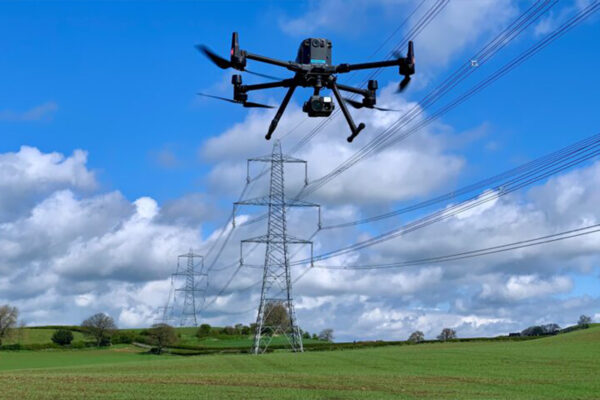
Inspecting powerlines has always been a risky task. In the past, many utility companies relied on helicopters to lift workers for visual inspections of powerlines. But this method is time-consuming and can put both people and equipment in danger, but not with powerline inspection Drone.
Now, many utility companies are turning to powerline inspection drones to improve their processes. These drones, also known as unmanned aerial vehicles (UAVs), are changing the way powerlines are inspected.
For example, a powerline inspection drone equipped with a LiDAR sensor can help powerline inspectors use light detection technology to conduct detailed inspections from a distance.
Powerline inspection drones offer huge advantages for utility companies that need to inspect powerlines quickly and safely. By using drones to inspect overhead power lines (OHPL), companies can perform inspections faster, safer, and at a lower cost compared to traditional methods. Drones can fly near the powerlines, capturing high-quality images and important data that reveal the condition of the lines. This reduces the risks faced by workers, speeds up inspections, and lowers the cost of maintaining powerlines.
In this article, you’ll learn more about the benefits of using a powerline inspection drone for your inspection needs. Maintaining powerlines is crucial for keeping the electricity supply running smoothly in communities. With growing energy demands and the complexity of modern power systems, it’s essential to keep powerlines in good condition. In recent years, drones have completely changed how powerline inspections are done. They offer a safer and more efficient alternative to older inspection methods.
With powerline inspection drones, companies can automate inspections, gather precise data on all parts of the power grid, make repairs faster, and avoid accidents. This reduces downtime and ensures a reliable power supply to homes and businesses.
By using a powerline inspection drone, utility companies can stay ahead of maintenance issues and ensure the safety and stability of their powerlines.
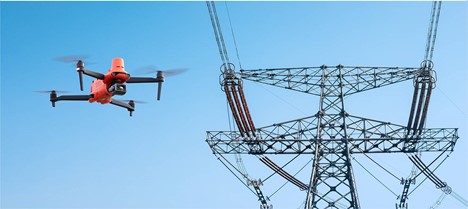
A powerline inspection drone is a special type of commercial drone used to inspect power lines without needing a person to be present on-site. These drones carry high-tech equipment like cameras, sensors, and more to do the job accurately.
Unlike regular drones, a powerline inspection drone is designed to carry tools such as thermal cameras, infrared sensors, and LiDAR systems. They can fly for a long time and hold heavier equipment to gather detailed data from power lines. With this technology, utility companies can monitor power lines from the air and quickly spot any issues.
Powerline inspection drones are used to scan power lines and check for damage, overheating, or other problems that could affect electricity flow. They can get close to the power lines and capture clear pictures and data, making inspections safer and faster than before.
Drones use cutting-edge technology to inspect power lines more effectively. Here are some of the important tools:
Thermal Imaging Cameras: The thermal powerline inspection drone cameras sense heat, showing areas where there might be problems, like overheating parts or faults. They help find issues that you can’t see with regular cameras.
LiDAR Sensors: LiDAR stands for Light Detection and Ranging. These sensors create 3D maps of power lines and nearby areas. They’re great for spotting things like trees growing too close to power lines or changes in the structure of the lines.
Infrared Cameras: Infrared cameras can detect heat coming from power lines. By doing this, they help find small problems before they become bigger and more expensive to fix.
Using these tools, a powerline inspection drone helps power companies keep their equipment working well and prevent major issues before they happen.
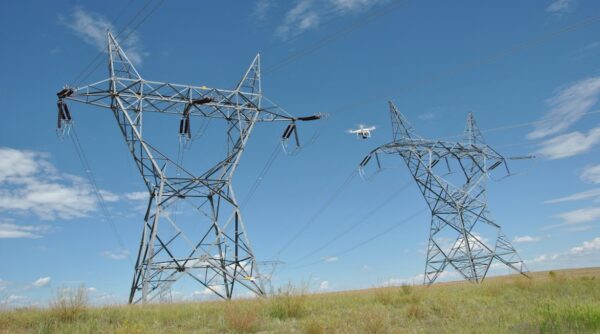
In the past, inspecting power lines was a challenging task that required technicians to manually check for issues. The traditional methods included using binoculars to look for problems from the ground or even flying in helicopters to get a closer view. While these methods worked, they came with many drawbacks.
Using drones for power line inspection has changed the way utility companies monitor their equipment. Here’s how traditional methods compare to the modern use of drones.
Traditional inspections meant putting technicians in dangerous situations. They had to climb poles or work near live wires, which increased the risk of accidents. With a powerline inspection drone, no one has to go near the wires. The drone can safely fly above and around power lines, reducing the chance of injury.
Older methods required a lot of time. Technicians had to inspect every pole manually, or helicopters had to be flown in, which took hours or even days. A drone inspection of power lines can be done much faster. These drones cover large areas quickly, allowing teams to finish inspections in a fraction of the time.
Using helicopters or large teams for manual inspections was expensive. Not only did it take more time, but it also required more labor and equipment. With drone power line inspection, companies save money because they need fewer workers and no helicopters. Plus, drones can be used multiple times without major operational costs.
Drones are transforming how power lines are inspected. Here’s why they’re better:
Better Access
Drones can easily reach hard-to-access areas like mountains or remote regions where technicians would struggle to get to. This makes drone inspection of power lines in remote areas much easier.
High-Tech Features
Many powerline inspection drones are equipped with thermal cameras and sensors that detect issues invisible to the naked eye. This means problems like overheating wires can be spotted before they cause outages.
Safer Monitoring
With drones, there’s no need to send technicians into risky situations. The drones do the heavy lifting, capturing high-quality images and videos without endangering human lives.
Detailed Reporting
Drones can capture high-resolution images and videos that can be analyzed later. This allows for more detailed reporting, which helps utility companies make informed decisions quickly.
By switching from traditional methods to drone power line inspection, companies not only improve safety and reduce costs but also make the inspection process faster and more accurate.

One of the most important benefits of using a drone inspection of power lines is improving safety. Before drones, workers had to climb poles and towers to check power lines. This was dangerous, as they could fall or get too close to live wires. With drones, no one needs to be at risk. Drones can fly near power lines, getting a clear view from all angles without putting anyone in harm’s way. They also make it easier to see areas that may be dangerous for humans to inspect.
Drones can even perform drone power line inspection in tough weather conditions. Whether it’s raining or windy, drones are designed to handle different types of weather. This means power lines can be checked regularly, no matter what the weather is like, ensuring no delay in finding problems. Unlike humans, who might need to wait for better weather, drones can get the job done whenever needed.
Another advantage of using a powerline inspection drone is how much money it saves. Traditionally, companies would have to pay for teams of workers, or even helicopters, to inspect power lines. These methods are not only expensive but also time-consuming. A drone, on the other hand, is much cheaper and faster. It helps reduce costs for inspections while keeping power lines running without interruptions.
Drones are quick and efficient when it comes to drone inspection of power lines. They can fly over long distances of power lines in a short amount of time. What might take a human team hours or even days can be done by a drone in just minutes. This speed helps companies find and fix problems faster, leading to fewer outages and better service.
A powerline inspection drone is equipped with high-tech cameras and sensors. These devices capture crystal-clear images and videos of the power lines. With this data, inspectors can see small problems, like tiny cracks or loose wires, that would be hard to notice with the naked eye. This means drones can help find problems earlier, making it easier to plan repairs before they get worse.
Drones make it easy to quickly survey large areas of land. For drone power line inspection, this is useful because power lines often cover miles of ground. Drones can fly along these lines and map out the terrain, showing any hazards like trees or other objects that might interfere with the power lines.
Another feature of a powerline inspection drone is its ability to create detailed maps of the power line assets. These maps are helpful for planning future work or tracking repairs. With drones, companies can keep up-to-date records of where all their power lines and equipment are located, making maintenance and upgrades easier.
Some power lines are in places that are difficult for people to reach, such as over rivers, mountains, or in remote areas. A drone power line inspection can easily reach these locations without any issues. This saves time and effort, as no one has to hike or find dangerous ways to access these areas. Drones can safely inspect any part of the power line, no matter where it is.
The data gathered by a powerline inspection drone can help companies predict when maintenance is needed. By reviewing the data, they can spot small issues before they turn into big problems. This type of predictive maintenance prevents sudden power outages and costly emergency repairs, keeping the power flowing smoothly.
Thanks to the clear and detailed data from drones, companies can make smarter decisions. They can use the information from a drone inspection of power lines to prioritize which repairs need to happen first and schedule regular maintenance. This leads to improved planning and better decision-making, ensuring the power grid runs more smoothly and efficiently.
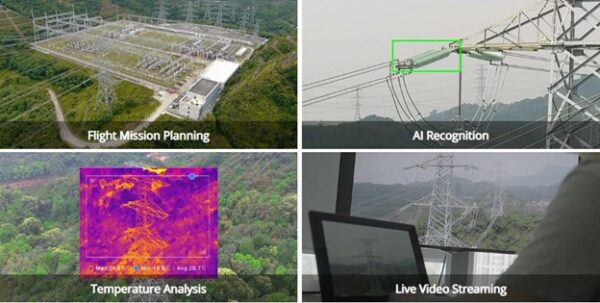
Using a powerline inspection drone offers many benefits, making inspections faster, safer, and more precise. These drones can reach difficult areas, reduce human risk, and provide accurate data. Here are some detailed benefits:
After completing a drone power line inspection, the data collected is turned into detailed reports. These reports include high-quality images, thermal scans, and a full analysis of the power lines’ condition. The reports help utility companies understand the condition of the lines, showing areas that need repairs or maintenance to avoid potential problems.
A drone inspection of power lines often involves thermal cameras that can detect problems like heat loss or overheating. Thermal imaging reports are essential for spotting issues that are not visible to the eye. By using these thermal scans, companies can take preventive measures before small issues turn into major failures.
Another key advantage of using a powerline inspection drone is its ability to create 3D maps of the power lines and nearby areas. These 3D maps provide a clear view of the terrain, allowing for better planning of repairs, installations, or maintenance tasks. They highlight any potential hazards and offer detailed information about the powerline setup and surroundings.
With the data collected from drone power line inspections, utility companies can perform predictive maintenance. By analyzing the information from regular inspections, they can identify potential issues before they escalate. This approach saves time, money, and resources by addressing problems early and preventing power outages.
In the event of a storm or other emergencies, powerline inspection drones can be quickly deployed to assess the damage. These drones can fly to areas that might be too dangerous for human workers. The fast response helps crews get the information they need to plan and execute repairs as quickly as possible, restoring power efficiently.
Drones for powerline inspection can also evaluate the structural integrity of powerline towers and support structures. They can spot weaknesses or damages that might go unnoticed. By using drones, utility companies can ensure that the towers and lines are stable, preventing future issues that could lead to more costly repairs or failures.
Thanks to the efficiency of drone inspection of power lines, regular inspections can be scheduled with ease. This helps maintain the overall health of the power lines, reducing the risk of unexpected breakdowns. Having a consistent monitoring schedule also means that any minor issues can be fixed before they cause bigger problems.
In critical situations, like natural disasters, a powerline inspection drone can provide immediate information to assess the damage. This quick assessment allows repair teams to prioritize areas that need attention first, ensuring that the most important repairs are made swiftly.
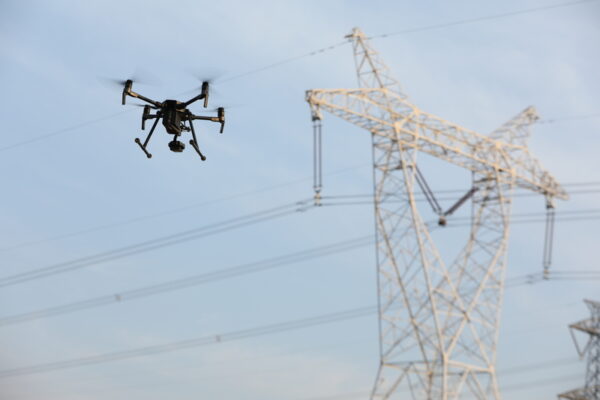
Selecting the right powerline inspection drone is important for safe and efficient power line maintenance. Different drones have unique features, and understanding these can help you make the best choice. Let’s look at some of the most important aspects to consider:
AI Defect Recognition: One key feature of a drone power line inspection is the use of artificial intelligence (AI) to detect defects. AI can recognize issues like damaged wires, wear and tear, or other faults automatically. Augmented Reality (AR) overlay adds another layer of detail by projecting digital data onto the real-world view during the inspection, making it easier for operators to spot problems quickly.
High Payload Capability: When considering a drone inspection of power lines, payload capability is crucial. This refers to how much weight the drone can carry, including cameras and other sensors. A higher payload capacity means the drone can carry more advanced equipment for better inspections, such as thermal or LiDAR cameras.
Zoom Capability: High zoom capability helps during drone power line inspection by allowing the drone operator to zoom in and check small details without getting too close to the power lines. This is important for maintaining safety and getting clear, detailed images of any faults.
Anti-Magnetic Interference: Power lines create magnetic fields that can interfere with a drone’s navigation system. Choosing a powerline inspection drone with strong anti-magnetic interference technology ensures that the drone remains stable and doesn’t lose control when flying near live power lines.
Safe Obstacle Avoidance: Safe obstacle avoidance is another important feature. Power lines can be hard to spot during a drone inspection of power lines, and obstacles like trees or poles can be in the way. Drones equipped with obstacle avoidance systems can detect and avoid these obstacles, ensuring a safe and smooth inspection.
Suitable for Corridor Mapping: Some drones are designed for corridor mapping, making them ideal for drone power line inspection. Corridor mapping helps create a clear and detailed map of long stretches of power lines, which is especially useful when inspecting power lines over large areas.
Cloud-Based Processing: Cloud-based processing allows data collected during a drone inspection of power lines to be stored and processed in the cloud. This means you can access the inspection data from anywhere, analyze it, and share it with your team in real time. Cloud storage also ensures that your data is secure and easily accessible for future inspections.
Military-Grade Security: Security is essential, especially when inspecting critical infrastructure like power lines. Choosing a powerline inspection drone with military-grade encryption ensures that the data collected is safe from hackers or other security threats.
Long Flight Time: A drone power line inspection often requires covering large distances, so flight time is an important factor. Drones with longer battery life can inspect more lines in one trip, reducing the need to stop and recharge. This increases efficiency and ensures that the inspection can be completed faster.
By keeping these features in mind, you can choose the right powerline inspection drone that meets your needs, ensures safety, and provides high-quality data for maintenance and repairs.
Using powerline inspection drones to check overhead power lines is becoming more popular. Drones help save time, lower risks, and give us accurate information. Here are some of the best powerline inspection drones you can find at Drone Shop. These drones come with smart features and are easy to operate, making them great for professionals.

The EVO Max 4T is an amazing powerline inspection drone. It has strong capabilities that make it perfect for checking power lines.
High-Resolution Camera: The EVO Max 4T has a clear camera that captures sharp images and videos of power lines. This helps in identifying any problems quickly.
Long Flight Time: This drone can fly for a long time without needing to recharge. This is helpful when inspecting long stretches of power lines.
Smart Technology: The drone uses smart sensors to avoid obstacles. This means it can fly safely around towers and other objects.

The Autel EVO II Dual 640T V3 is another excellent choice for drone power line inspection. It combines thermal and visual cameras for thorough inspections.
Dual Cameras: With a thermal camera, it can see heat, making it easy to spot hot spots on power lines. The visual camera helps capture detailed images.
User-Friendly: This drone is simple to control. Even beginners can learn to fly it quickly.
Durable Design: It is built to withstand tough weather, making it perfect for inspections in various conditions.
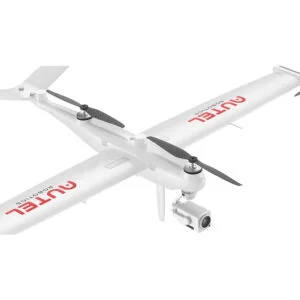
The Dragonfish Series drones are designed for serious inspections. They offer versatility and strength.
Vertical Takeoff and Landing: These drones can take off and land like a helicopter. This is useful when inspecting hard-to-reach areas.
Long Range: The Dragonfish can cover large areas without losing signal, making it perfect for long-distance drone inspection of power lines.
High-Quality Data: It gathers precise data that helps in maintenance and repairs.

The DJI Matrice 30T is a popular choice among professionals for powerline inspections.
Advanced Sensors: It has built-in sensors that help it see in different weather conditions, like rain or fog.
Quick Deployment: This drone is easy to set up and can be ready to fly in minutes, which is great for urgent inspections.
Smart Flight Modes: It has special flight modes that allow it to follow power lines automatically, making the job easier.

The DJI Matrice 300 RTK is one of the best powerline inspection drones for industrial use.
High Payload Capacity: It can carry multiple cameras and sensors at the same time, giving you more options for inspection.
Accurate Positioning: With RTK technology, it can pinpoint locations very precisely, which is important for accurate inspections.
Long Flight Time: This drone can fly for up to 55 minutes, allowing you to inspect many power lines without recharging.
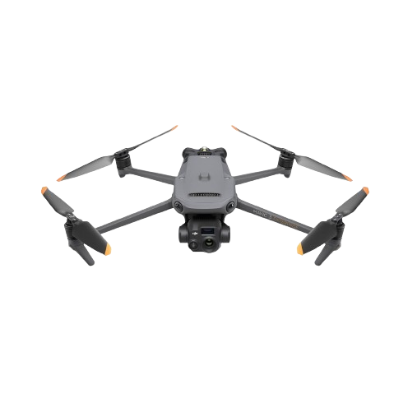
The DJI Mavic 3 Enterprise is compact yet powerful. It’s great for quick inspections of power lines.
Portable Design: This drone is easy to carry, making it great for fieldwork. You can take it anywhere you need to inspect power lines.
Clear Images: It has a high-quality camera that provides sharp and detailed pictures of power lines.
Simple Controls: The Mavic 3 is easy to fly, so both new and experienced pilots can operate it without any trouble.
When it comes to powerline inspection drones, having the right payload is essential. Payloads are the equipment that the drone carries, and they can make a big difference in how well the drone performs its job. Here are some of the best payload options available for drone power line inspection:
| Camera | Key Features |
|---|---|
| DJI Zenmuse L2 LiDAR Camera | – Provides high-precision 3D mapping using LiDAR technology. – Ideal for detecting vegetation encroachment and assessing powerline safety. – Can work in various weather conditions, ensuring reliable data collection. – Comes with advanced features for enhanced performance. |
| DJI Zenmuse L2 LiDAR Camera | – Features similar capabilities as the Plus version. – Offers exceptional data accuracy for powerline inspections. – Designed for easy integration with DJI drones. – Supports a range of applications in utility inspections. |
| DJI Zenmuse L2 LiDAR Camera | – A cost-effective version that still delivers quality results. – Useful for mapping and analyzing powerline structures. – Reliable in collecting detailed information for maintenance assessments. – Compatible with many DJI drone models. |
| Autel L35T Gimbal Camera | – Provides thermal imaging and regular video capabilities. – Great for identifying hotspots and issues along powerlines. – Lightweight design for easy drone handling. – High-resolution images help in detailed inspections. |
| Autel EVO Max 4N Gimbal Camera | – Equipped with advanced stabilization features for clear images. – Offers excellent video quality for inspections. – Can capture footage in various lighting conditions. – Ideal for long-duration inspections of powerlines. |
| Autel EVO MAX 4T Gimbal Camera | – Compact design suitable for various drone models. – Provides versatility with both thermal and visual capabilities. – A good choice for those looking to conduct thorough drone inspections of power lines. – User-friendly interface for quick operation. |
| DJI Zenmuse H20T | – Combines thermal and visual cameras in one payload. – Allows for simultaneous thermal and optical inspections. – High-quality imaging aids in quick problem identification. – Perfect for comprehensive assessments of powerline integrity. |
Accuracy: Each camera is designed to deliver precise data, ensuring you know exactly what’s happening along the power lines.
Versatility: Many of these payloads can be used in different conditions, making them ideal for various inspection scenarios.
Efficiency: With advanced imaging technologies, these drones can quickly identify issues, helping to save time and reduce costs.
Safety: Using drones for the drone inspection of power lines keeps workers safe by avoiding hazardous climbs or direct contact with electrical equipment.
High-Quality Imagery: With features like thermal imaging and high-resolution video, these payloads provide detailed visuals that are essential for thorough inspections.
By selecting the right powerline inspection drone and its corresponding payload, utility companies can enhance their inspection processes. This not only improves operational efficiency but also ensures the safety and reliability of powerlines in the long run.
Yes, using drones for inspecting overhead power lines is generally safe when operated by trained professionals. Drones reduce the need for manual inspections, minimizing risks to human life and providing detailed, real-time data without physical contact with the power lines.
Thermal imaging sensors and high-resolution visual cameras are best for power line inspections. These sensors help detect hotspots, faults, and structural issues, providing precise data that can prevent potential power outages or failures.
The EVO Max 4T and Dragonfish Series drones are among the best choices for overhead power line inspections. They offer long flight times, advanced sensors, and obstacle avoidance, ensuring accurate and efficient inspections.
The frequency of drone inspections depends on the condition and criticality of the power lines. However, it’s recommended to conduct drone inspections at least once every six months to ensure timely detection of any potential issues.
Drone inspections are highly accurate and reliable, offering real-time data with pinpoint precision. They can detect minor issues that might be missed during manual inspections, making them a crucial tool for maintaining power line safety.
Most professional drones used for power line inspections, like the EVO Max 4T, are designed to operate in various weather conditions, including light rain and wind. However, extreme weather conditions should be avoided to ensure safety and accuracy.
Yes, operators typically need special permissions and certifications to fly drones for power line inspections. This includes following local aviation regulations and ensuring the drone pilots are licensed.
The cost varies depending on the drone model, the complexity of the inspection, and the area covered. On average, drone inspections can be more cost-effective than traditional methods, with prices ranging from a few hundred to several thousand dollars per inspection.
The duration of a drone inspection depends on the length and condition of the power lines. A typical inspection might take a few hours to a day, depending on the complexity of the network and the drone’s capabilities.
Yes, many modern drones, such as the Autel EVO II Dual 640T V3, offer live-streaming capabilities. This allows real-time monitoring of inspections, enabling immediate decision-making and quick responses to any issues detected.

Drone Inspection Guide: How UAV Inspection Is Used Today Drone inspection technology is now widely used across industries where routine
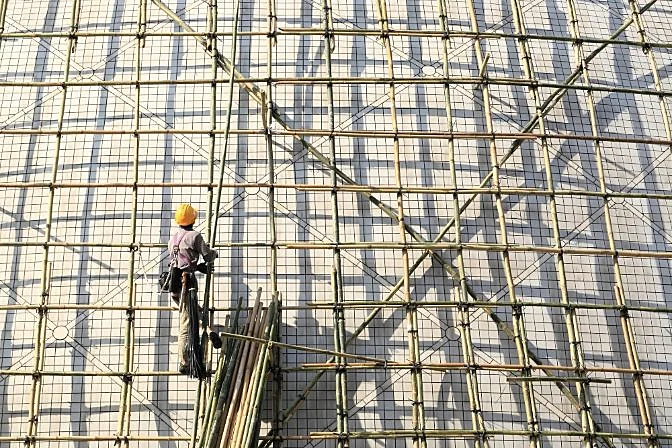
Scaffolding is a temporary structure used in building construction to support workers, tools, and materials while work takes place at